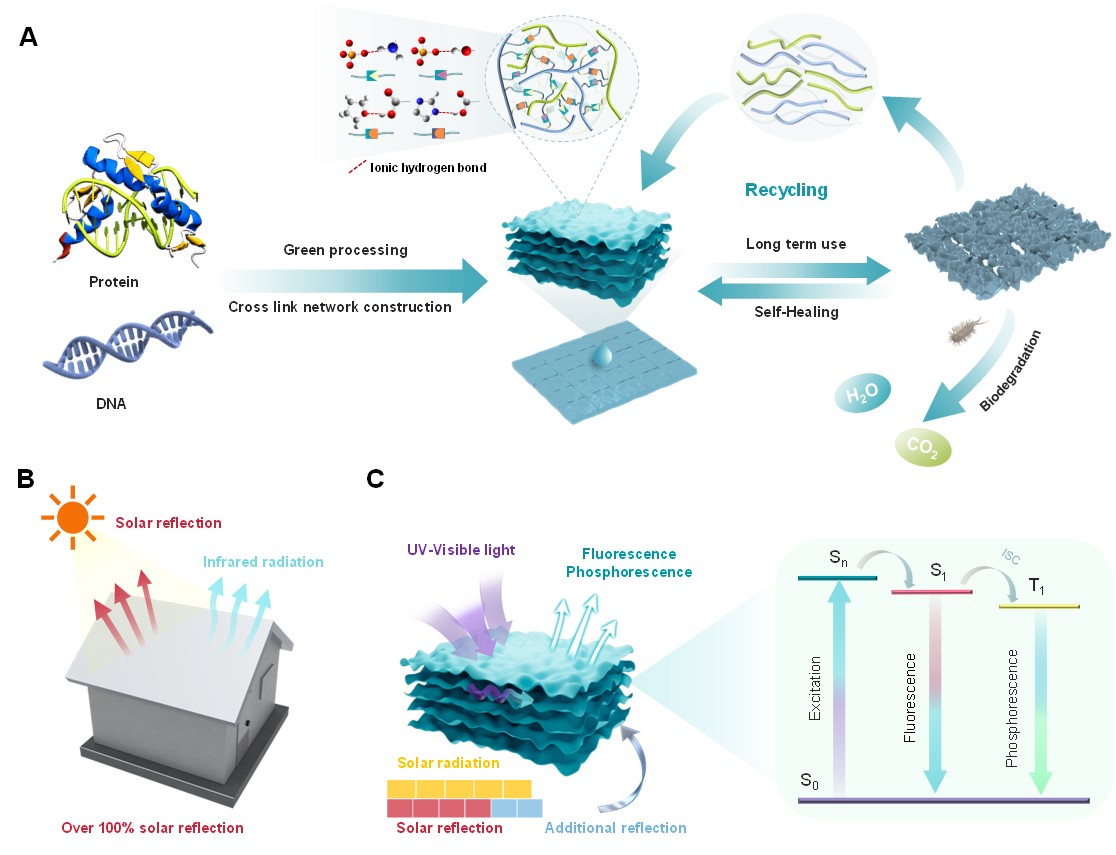New Material for Next-generation Cooling

Schematic diagram of biomass radiative cooling aerogel panel. (PHOTO: SCIENCE)
By TANG Zhexiao
Climate change and accelerated urbanization have led to serious energy, environmental, and safety issues.
A research team from China's Sichuan University has developed an innovative biomass-derived aerogel which can reduce ambient temperatures by 16.0℃ on sunny days under high solar irradiance, according to their study published in the Science journal on July 5.
Passive radiant cooling is a potentially sustainable thermal management strategy. However, petrochemical-derived cooling materials usually face efficiency challenges owing to the absorption of sunlight.
Combining DNA and gelatin, researchers converted absorbed ultraviolet light into visible light. The material has a visible light reflectance exceeding 100 percent and is able to yield a large cooling effect.
The simulation results of the study showed that all of the modeled cities experienced significant reductions in the annual energy consumed to cool buildings.
Additionally, this biomass-derived aerogel material has other properties such as flame retardancy, rapid self-repairability, recyclability and biodegradability. It is also highly eco-friendly throughout the entire life cycle of the material source, preparation, use and disposal.
It will be another tool for designing next-generation sustainable cooling materials, the team said.


